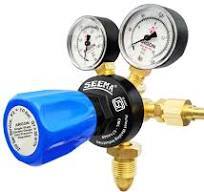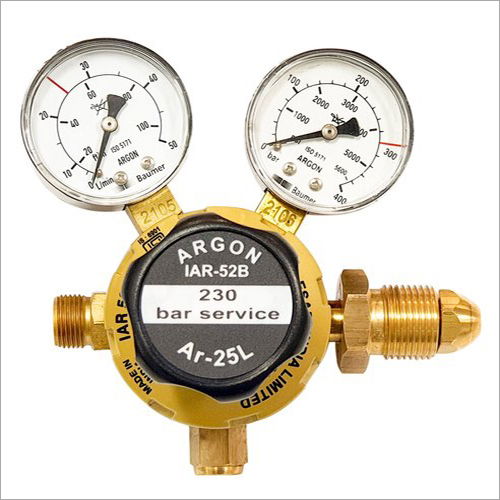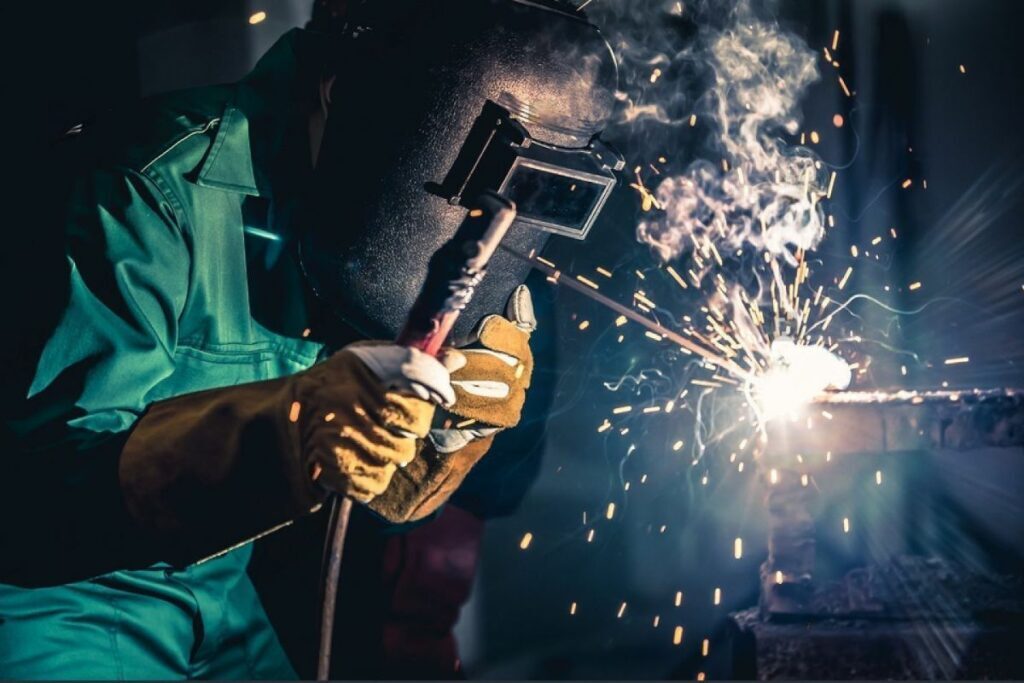Understanding Gas Regulators: A Comprehensive Guide for Welders
 Gas regulators stand as vital components in welding processes, yet their intricacies may elude many welders. In this article, we'll unravel the significance and functionalities of gas regulators, emphasizing their crucial role in ensuring industrial safety, particularly in contexts like those in Chennai, Tamil Nadu, where businesses such as Hamid Traders play a pivotal role in distributing welding equipment, including regulators.
Gas regulators stand as vital components in welding processes, yet their intricacies may elude many welders. In this article, we'll unravel the significance and functionalities of gas regulators, emphasizing their crucial role in ensuring industrial safety, particularly in contexts like those in Chennai, Tamil Nadu, where businesses such as Hamid Traders play a pivotal role in distributing welding equipment, including regulators.
In essence, a gas regulator acts as a control mechanism for managing the flow and pressure of gases indispensable in welding tasks, encompassing gases like oxygen, acetylene, or argon. This control holds immense importance as diverse welding applications demand varying gas flow rates and pressures. Devoid of a dependable gas regulator, maintaining command over gas utilization during welding becomes precarious, potentially leading to hazardous or inefficient outcomes.Gas regulators operate by transitioning high-pressure gas from a cylinder to a lower, more consistent pressure suitable for welding tasks. This process entails a combination of valves and diaphragms, facilitating the modulation of gas flow and pressure.
A plethora of gas regulators are available, each boasting unique attributes and limitations.While understanding gas regulators may seem daunting, acquiring a foundational comprehension is imperative for ensuring both safety and efficacy in welding endeavors. In the subsequent sections, we'll elucidate the inner workings of gas regulators, explore the various types, guide you in selecting the appropriate regulator for your needs, and offer insights into installation and maintenance best practices.
How Gas Regulators Function:
To grasp the functioning of gas regulators, it's pivotal to comprehend the principles of pressure and flow control in welding. Welding processes rely on gases like oxygen, acetylene, or argon to generate the requisite heat and shielding for metal fusion. However, determining the precise gas volume required hinges on factors such as weld size, metal type, and desired finish.Enter gas regulators. These devices are engineered to reduce high-pressure gas from cylinders to a consistent, lower pressure suitable for welding tasks. Gas regulators achieve this through a system of valves and diaphragms, as follows:
- Gas enters the regulator via the inlet port, directly linked to a high-pressure gas cylinder.
- Subsequently, the gas passes through a filter and enters the main valve assembly, where a diaphragm and spring mechanism regulate its pressure.
- Collaboratively, the diaphragm and spring modulate gas pressure as it exits the regulator.
- During the welding process, as gas consumption depletes pressure within the regulator, the diaphragm flexes, prompting the valve to open, facilitating a steady gas flow from the cylinder to maintain consistent pressure.
It's crucial to recognize that gas regulators can be influenced by variables such as temperature, humidity, and gas purity. Fluctuations in temperature, for instance, can induce pressure fluctuations, potentially compromising weld consistency. Similarly, gas impurities might trigger regulator malfunctions, leading to compromised safety and efficiency.
Types of Gas Regulators:
Several types of gas regulators cater to diverse welding requirements, each possessing unique strengths and weaknesses. Common variants include single-stage, dual-stage, high-pressure, low-pressure, and specialty regulators:
- Single-stage gas regulators: Engineered to reduce gas pressure in a single step, ideal for applications necessitating consistent pressure like cutting or brazing.
- Dual-stage gas regulators: Similar to single-stage regulators but reducing gas pressure in two steps, offering enhanced precision and stability, particularly suited for TIG welding.
- High-pressure gas regulators: Built to withstand high-pressure gases employed in oxy-fuel welding, featuring robust components tailored for high-pressure applications.
- Low-pressure gas regulators: Designed for handling lower-pressure gases typical in MIG or TIG welding, emphasizing precision and sensitivity for fine gas flow and pressure control.
- Specialty gas regulators: Tailored for specific applications involving exotic or highly reactive gases, equipped with unique features or components to address specialized needs.
When selecting a gas regulator, factors such as gas type, application, gas flow rate, equipment compatibility, and adherence to safety standards warrant consideration. It's imperative to align your choice with the specifics of your welding task, ensuring optimal performance and safety.Selecting the Right Gas RegulatorChoosing the appropriate gas regulator is pivotal for achieving optimal welding performance and safety. Consider the following factors when making your selection:
- Gas type: Match the gas regulator with the specific gas utilized in your welding application, accounting for variations in pressure and flow requirements.
- Application: Tailor your choice to the demands of your welding task; for instance, opt for a dual-stage regulator for precision TIG welding or a high-pressure regulator for oxy-fuel welding.
- Gas flow rate: Factor in the required gas flow rate for your application, selecting a regulator capable of accommodating varying gas volumes with precision.
- Equipment compatibility: Ensure compatibility between the gas regulator and your welding equipment, including torches, hoses, and fittings, to facilitate seamless integration.
- Safety standards: Prioritize regulators certified by reputable organizations like the American Welding Society (AWS) or the Occupational Safety and Health Administration (OSHA), adhering to established safety protocols.
Additionally, prioritize reputed brands known for quality and reliability, such as Gas Arc regulators. Adhering to manufacturer guidelines for installation, usage, and maintenance is crucial for optimal regulator performance.
Installing and Maintaining Gas Regulators:
Proper installation and maintenance are imperative for safeguarding regulator functionality and safety. Adhere to these best practices:
- Installation: Follow manufacturer instructions meticulously, ensuring secure connection to the gas cylinder, tight hose fittings, and accurate pressure and flow rate adjustment. Employ appropriate personal protective equipment (PPE) and work in well-ventilated environments.
- Maintenance: Conduct routine inspections to detect leaks or damage, clean the regulator as needed, and replace worn or damaged components. Regularly replace diaphragms and springs to prevent wear-related malfunctions.
- Troubleshooting: Promptly address issues like leaks, inconsistent gas flow, or incorrect pressure by consulting manufacturer instructions and seeking professional assistance if necessary.
- Safety considerations: Prioritize safety by wearing appropriate PPE, storing gas cylinders correctly, and adhering to safety protocols to mitigate injury or damage risks.
By adhering to these installation and maintenance best practices, you can ensure optimal gas regulator performance and safety in welding operations. Stay informed about evolving safety guidelines and regulations, seeking professional guidance for any concerns regarding gas regulators.
Conclusion:
Gas regulators play a pivotal role in welding operations, enabling precise control over gas flow and pressure for safe and effective outcomes. Acquiring a foundational understanding of gas regulator functionality, selecting the appropriate type for your needs, and adhering to installation and maintenance best practices are essential for optimal welding performance and safety.Different welding applications necessitate specific types of gas regulators, underscoring the importance of aligning your choice with the task at hand. Prioritize safety, equipment compatibility, and adherence to established standards when selecting a gas regulator, opting for reputable brands renowned for quality and reliability.By dispelling common misconceptions and adhering to best practices, welders can harness the full potential of gas regulators, ensuring safe, efficient, and high-quality welding outcomes. For further guidance or inquiries regarding gas regulators or welding equipment, seek professional assistance to enhance your welding endeavors.


